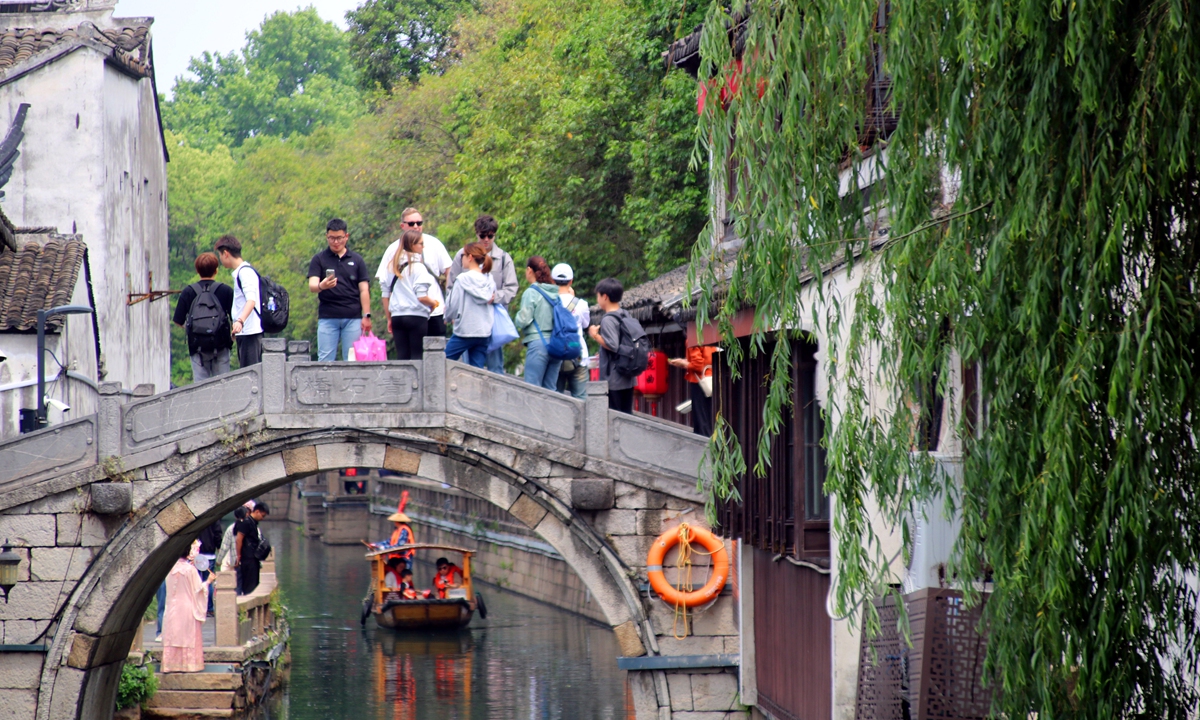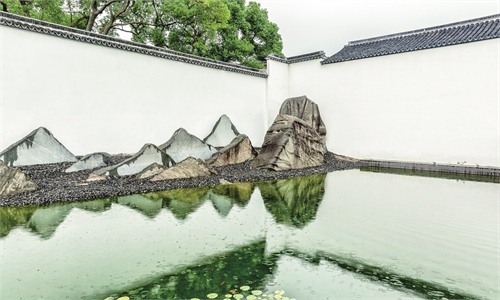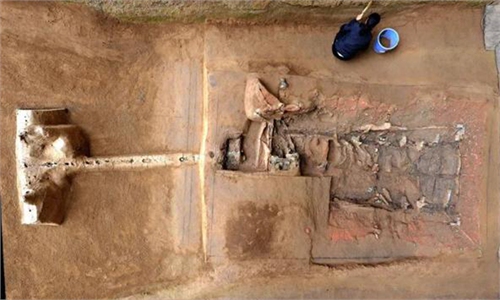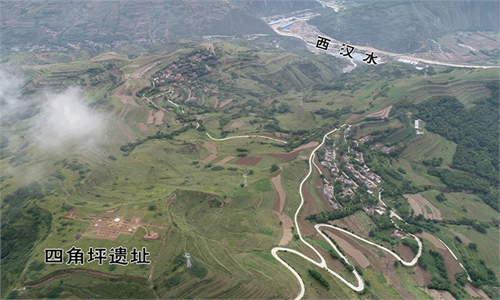ARTS / CULTURE & LEISURE
New finds in Suzhou reveal city center from over 2,000 years ago
Buildings highly similar to those of Qin Dynasty

Tourists sightsee along the historic Pingjiang Road in Suzhou, East China's Jiangsu Province, on May 6, 2024. Various tourist attractions in Suzhou are ushering in a large number of tourists who are traveling off-peak after the five-day May Day holidays, which lasted from May 1 to 5. Photo: VCG
Revolving around the archaeological ruins called the Jincheng Xincun site, literally meaning the Jincheng New village site, an academic meeting was recently held in Suzhou, East China's Jiangsu Province, during which new findings were discussed that show the site was once an urban center during the Qin Dynasty (221BC-206 BC).
The Jincheng Xincun site is located in Suzhou's historical Gusu district. The site became a sensation when it was discovered in 2022 due to the finds such as refined architectural components revealing early human civilization in the area.
"The archaeological ruins have witnessed several historical periods in China including the Qin and Han (206BC-AD220) dynasties," archaeologist Yu Pei'er told the Global Times.
Contextualizing material relics referenced in historical texts like the Book of Han and Records of the Grand Historian, experts at the meeting introduced their latest discovery: the governmental office of the Qin dynasty' s Kuaiji county had been established near the site.
Cheng Yi, head of the Suzhou Institute of Archaeology, said that the area near the Jincheng Xincun site was "highly likely" a major urban center of the Qin Dynasty. The expert also noted that the earliest human activities around the site have been dated back to the Spring and Autumn Period (770BC-476BC).
"Kuaiji county was geographically located along the lower reaches of the Yangtze River. It was widely believed by many that it was in what is today Suzhou, but the location of the center of the county has always been a puzzle," archaeologist Lu Zhaojun told the Global Times.
What made archaeologists firmly believe the Jincheng Xincun site was once this Qin urban center were three architectural remains discovered at the site. Experts noticed that the buildings were highly similar to the typical Qin buildings discovered in Northwest China's Shaanxi Province, long seen as the birthplace of the Qin Dynasty.
A large number of tiles, including a decorative type called wadang tiles, were unearthed at the Jincheng Xincun site. Those wadang tiles, especially their decorations, were "extreme unusual finds for Suzhou," said Fu Jian, an associate research fellow at the Emperor Qinshihuang's Mausoleum Site Museum.
"We speculate that these tiles spread to Suzhou after the Qin state unified China and were one of the symbols used in Suzhou to showcase this unification and power of the Qin regime," Fu emphasized.
Other than tiles, a pottery pipe inscribed with the Chinese character "you," meaning "right" in Chinese, was also discovered. The letter engraved on construction materials with characters engraved upon them were "only used for high-grade government buildings," Zhang Tian'en, a researcher at the Shaanxi Provincial Institute of Archaeology revealed.
"Such discoveries contribute to our exploration of Suzhou's urban construction history as well as helps us to expand the city's historical narrative," Cheng noted.
The first excavation of the Jincheng Xincun site was carried out in 2022. A total of 200 square meters was excavated and investigated. More than 260 relics and fragments of artifacts were unearthed, including bronze coins and pottery-made ritual objects.
A large number of ancient cooking utensils such as the wok-like fu and the steamer zeng were also unearthed along with more than 10 types of remains from animals like horses, dogs and pigs.
"Archaeological works carried out at sites like the Jincheng Xincun site help us to see what our ancestors' lifestyles were like and how their social and cultural lives were formed," archaeologist Yu Pei'er told the Global Times.



